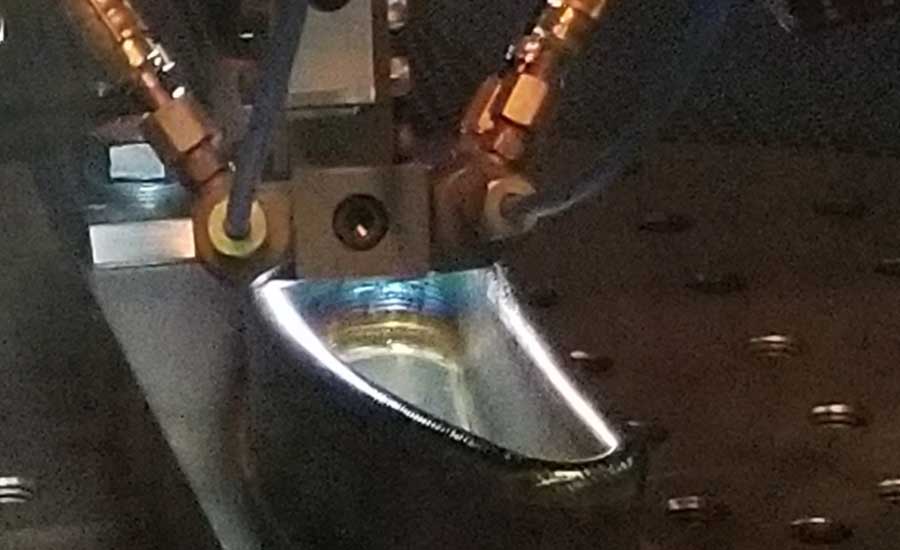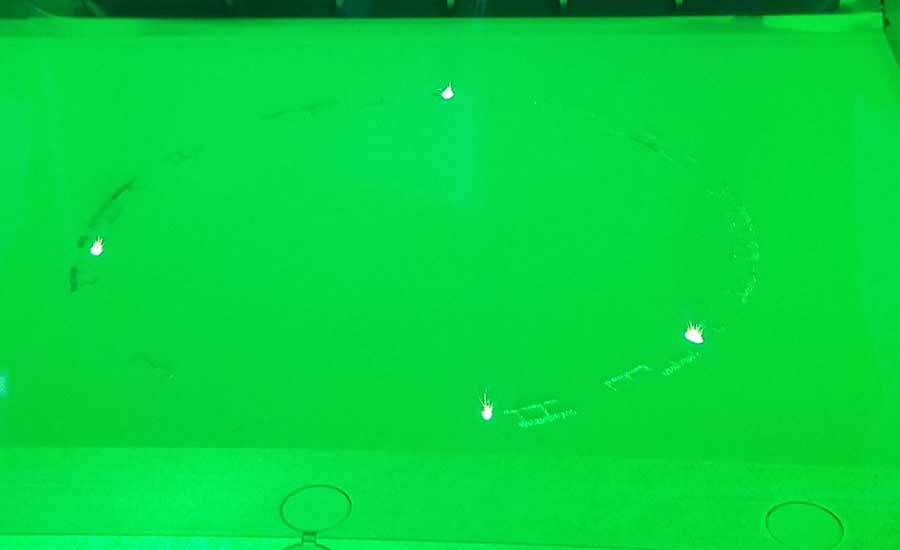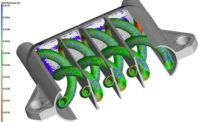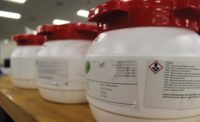Additive manufacturing (AM) is everywhere and anywhere nowadays. Every day technical websites, and even most social media sites, are posting cool videos and new applications. Companies are 3D printing everything from Met Gala dresses, highly sophisticated spinal implants, and rocket fuel nozzles. Siemens has even printed and engine run high pressure turbine blades. These blades are some of the most complex geometry and highly stressed parts of a gas turbine engine. The printing systems are becoming more stable, manufacturer competition is on the rise, and as with most things, time has allowed for maturity of the processes and raw materials. The possibilities are seemingly endless for this technology.
Last year I wrote that, “the thought of popping a design into a machine and having a functional part come out the other side was science fiction a generation ago. We are nowhere near the Star Trek replicators, but we are closing that gap.” Well, that gap has closed further over last year and several companies are even providing desktop systems capable of printing just about any geometry and most conventional materials.
Unfortunately, as the AM manufacturing technologies continue to advance and mature, the inspection methods for these unique and complex shapes that AM is producing has not seen the same growth. Because of this, there is a real need for discussion of both the metallurgical validation and the inspection of individual AM components. We can push the envelope on the manufacturing side as much as possible, but safety and quality should always be our number one priority. We need to ensure that the integrity of the product is maintained and that the inspection methods are providing the information needed.
Currently, AM part producers are applying the same inspection processes that conventional manufacturers do. They do this by using the same mechanical and nondestructive inspections that are in place and required by industries like casting, forging, and metal injection molding to name a few. Some of the producers in more critical industries like space and aviation are also requiring more advanced methods like computed tomography (CT), but sometimes not for every piece, only on a sampling of the part build. The mechanical testing is usually only performed on a test piece that is built, in the same build as the actual part. Is this good enough?
Before we go any further and to be clear, we are only going to be discussing the most current and dominant AM manufacturing methodologies, which are used for critical and structural components. These method groups are Powder Bed Fusion (PBF) and Direct Energy Deposition (DED). PBF includes Direct Metal Laser Sintering (DMLS), Selective Laser Sintering (SLS), Selective Laser Melting (SLM), and Electron Beam Melting (EBM). DED includes Gas Tungsten Arc (GTA), Plasma Arc (PA), Gas Metal Arc (GMA), Plasma Transferred Arc (PTA), Laser Beam (LB), and Electron Beam Freeform (EBF). Yes, that is a lot of acronyms, but all you need to remember is that PBF is powdered metal and that DED is wire or other stock raw metal.

Direct energy deposition. Source: WeaverNDT
There are other AM methods, but this is where we will focus for the purpose of looking at the inspection process.
Ok, you are a capable, consistent, and competent AM part manufacturer. You have selected your method and machines of choice, you have validated your processes, fatigued your gazillion test bars, send out or performed all the required destructive testing, you have trained operators and are using only certified material. You are ready to take orders and deliver product. Depending on the types of products you will be producing, you will have varying degrees of inspection to perform. If you intend to be diverse and flexible, you need to select the inspection methods that provide you the best approach at ensuring part conformance and integrity. How do you do this? What are the guidelines and acceptable methods?
The guidelines, specifications, and references are not as defined as you would think. They are still in process for many industries and if you dig into what all the current major AM component suppliers are saying and doing, they are using the same inspection methods that are used in castings and forgings. Those traditional manufacturing methods usually require dimensional, external and internal testing, and in some cases a specific surface roughness is also required.
These methods are readily available and for the dimensional inspections, coordinate measurement machines (CMM), gages, and light scanners are typically used. For the external surface testing the methods of choice are visual (VT), fluorescent liquid penetrant (PT), and electromagnetic (ET). For internal testing, ultrasonic (UT), radiography (RT), electromagnetic (ET), and computed tomography (CT) are used. These are all very understood methodologies and are considered the acceptable methods for inspection. Does that mean that they simply transfer over from casting and forgings into AM?

Selective laser sintering. Source: WeaverNDT
I believe the answer to that question is sometimes. For the simpler components, these inspections are most likely more than adequate. There may be some additional surface preparation and smoothing needed before they can be performed and there may also be some additional thermal processing required as well, but with these things in place, simple AM parts should be able to use only the traditional inspections. Now defining the size and shape limitations that make a part “simple,” is a discussion for a later time and for a very broad group. For more complex AM components, there needs to be more than just the traditional inspections and consideration of alternate and new inspection methodologies need to be discussed, evaluated, and studied.
Why is this the case? There are several reasons, first, both PBF and DED are building/printing parts in layers and this can introduce defects or flaws that do not form in castings and forgings. These are full body methods of manufacturing, meaning that the entire component is formed at one time. Secondly, many AM components are very complex. Traditionally, they may take many manufactured parts to construct. This means that if the newly designed AM part is replacing five traditional components, those five components would each have their own inspection requirements. So, now we have one AM part with one set of inspections. This means we are losing our previous accessibility to inspection surfaces and are thereby limiting what we can examine. Lastly, another major item is surface roughness. Just like the simple AM part a complex part can have some additional surface preparation and smoothing performed to the external surfaces, but the internal surfaces are not going to be smooth and this can be an issue.
With these known limitations most AM manufacturers of any complex and critical component have turned to a 100% requirement of CT. This inspection detects most gross defects and is a great tool for validating internal features and geometry. It is great that companies have taken this step, but as I mentioned before consideration of alternate and new inspection methodologies need to also be discussed. The main reason for this is CT resolution. It is a great tool, but as the parts become thicker and more complex CT will not be as sensitive as required to confirm if defects are present or not present at the single or even multiple layer level.
Knowing what we do about the differences between traditionally produced and AM produced components and knowing what the current inspections are used for and their limitations, we should always be discussing, evaluating, and studying new inspection methods. The AM industry cannot only be providing advancements in the actual AM processes, but also in production-ready inspection options that aid in the assurance of a quality component.

A 3D-printed impeller. Source: WeaverNDT
There are many alternative inspections used in different industries that are outside the standard methods previously mentioned. A few of the leading methods for external inspections are Laser Ultrasonic (LUT) and X-ray Diffraction (XRD). Both methods are showing promise in providing new information that the current inspections do not provide. LUT is still in early development with AM, but its ability to provide repeatable ultrasonic data on rough surfaced components is very promising. XRD is an X-ray inspection that provides information about the stress state of an AM component. This method can be used to ensure that an AM part is meeting a specific stress requirement. It can also be used to measure the consistency of the AM process by comparing each component within a single build or components built at different times or on different machines.
For internal and full body inspections, technology such as Resonant Acoustic Method (RAM) is being trialed by AM manufacturers. This method uses the natural frequencies of the parts and can be quite useful when the components are beyond the capability limits of CT.
In closing, I will reiterate again, that as AM manufacturing continues to advance and mature, the inspection methods for these unique and complex AM shapes needs to advance and mature along with it.



